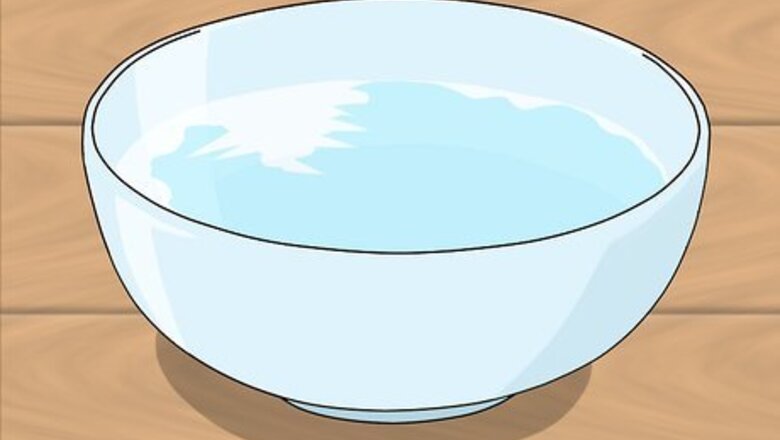
views
Soaking Your Hands
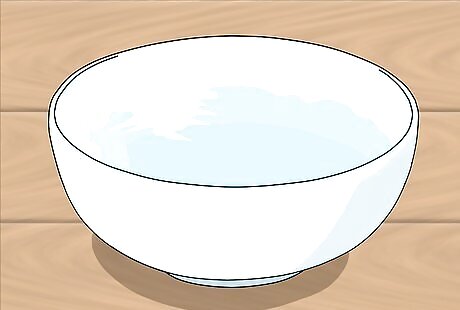
Fill a bowl with warm water. For the manicure, you’ll need a large bowl. Ideally, it should be large enough that both hands can fit inside at the same time. Add enough warm water to the bowl to cover the hands. You don’t need to heat the water on the stove. It should be comfortably warm to soak your hands in, so it’s fine to take it straight from the sink.
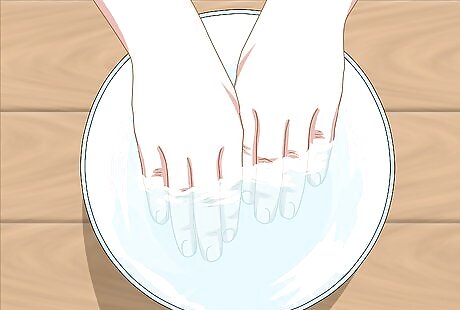
Soak your hands for several minutes. Once the bowl is full of water, submerge both hands. Allow the hands to soak for approximately 10 minutes so the skin and nails both have time to soften. If your bowl isn’t large enough to soak both hands at once, it’s best to use two smaller bowls so you can still soak your hands at the same time. If you have to soak the hands separately, the water will likely cool by the time you’re ready to soak the second hand. Dump out the old water, and refill it with warm water. You can skip soaking your hands if you take a warm shower just before you do the manicure.
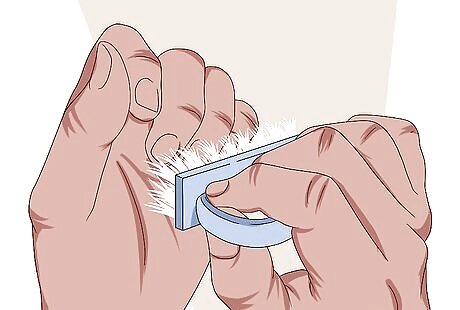
Scrub your nails with a brush. When you’re finished soaking your hands, pat them dry with a clean towel so they’re not dripping. Next, use a nail brush to gently scrub the nails and surrounding skin to remove any dirt, grime, or loose skin. Be sure to choose a soft nail brush that won’t be too rough on the skin and nails.
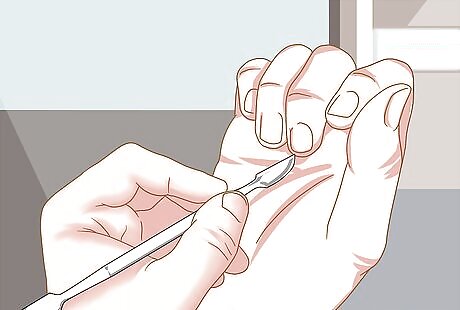
Clean under your nails. It’s also important to clean under the nails. Use a metal manicure stick or wooden orange stick to gently remove any dirt or grime that may be underneath the nails. It’s best not to use the pointed end of the manicure or orange stick when you’re cleaning your nails because you may hurt yourself. The slanted, rounded side usually works best.
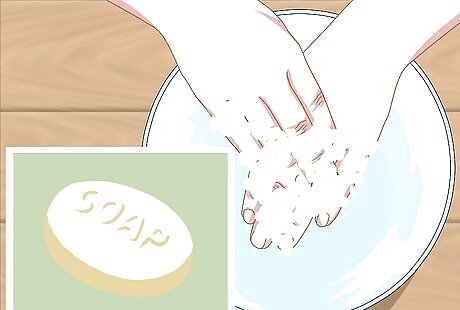
Rinse your hands with warm water and pat dry. After brushing your nails and cleaning underneath them, wash your hands with warm water and soap. Pat your hands dry with a clean towel. Use a soap that’s meant for the hands so you don’t dry out your skin. Antibacterial soaps are generally not recommended as they are more drying, do not clean better than regular hand soaps, and contribute to bacterial resistance.
Trimming Your Nails and Cuticles
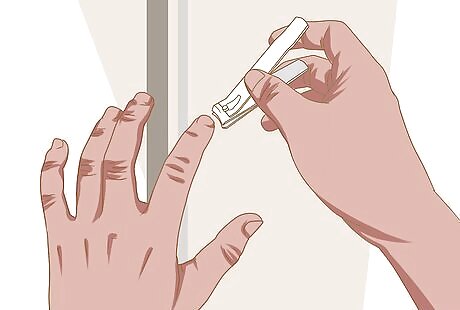
Clip your nails. With a pair of nail clippers, trim your nails to your desired length. Keep the shape square because trying to round the nails may cause ingrown nails. Make sure to use a good quality pair of clippers. A stainless steel pair is the best option, but check the feel of the pair too to ensure that there’s no risk of your thumb slipping off when you’re clipping. Don’t trim your nails too short. That can expose the nail bed at the tip of your finger, which may remain sore until the nail grows back.
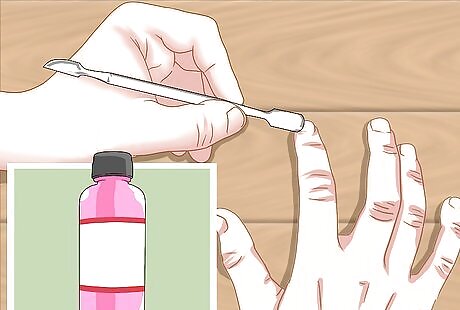
Apply a cuticle remover. The cuticle is the thin band of dead skin that grows up over the bottom of the nail. To get rid of it, rub a small amount of liquid cuticle remover over the bottom of all of your nails to soften the skin and make it easier to remove. You usually have to allow the cuticle remover to sit on the cuticle for 30 seconds to 1 minute for the skin to be properly softened. Consult the package instructions to be sure. You can purchase cuticle remover at a drugstore or beauty supply store.
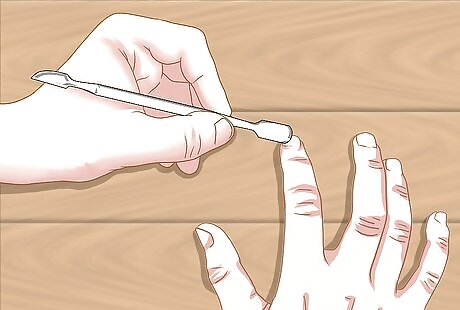
Push back your cuticles. Once the cuticle remover has had a chance to soften the skin, use a metal cuticle pusher or wooden orange stick to remove the cuticles. Some of the cuticles will easily wipe away, but you’ll need to gently push more stubborn ones back. Never cut, trim, or snip your cuticles. They can easily become infected.
Filing and Buffing Your Nails
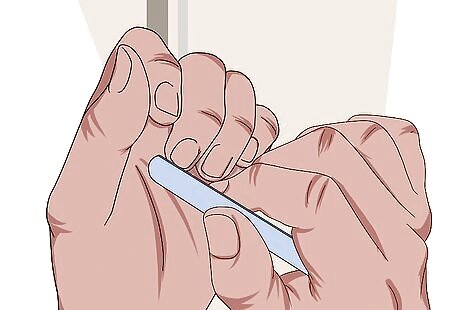
Smooth the edge of each nail with a file. While clipping your nails can get them to the right length, it usually leaves them with an rough, uneven edge. Use a nail file or a nail block to gently file the edge of your nails so they’re soft and smooth. It typically takes only a couple of strokes to file the edge of your nails. File your nails in the same direction rather than going back and forth. That helps round out the shape of your nails for a neater look.
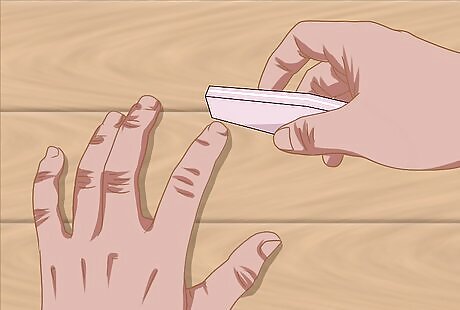
Buff the nails until they’re smooth. Nails can develop ridges that give them an uneven surface. Use a sponge buffing block to gently buff your nails so they’re smooth and even. Pay attention to the instructions that come with your buffing block. One side is typically meant for buffing away ridges and smoothing the nails while another is meant for buffing shine into the nails. Use the proper side for your desired effect. You can buff your nails to give them a subtle shine that’s not as obvious as a shiny topcoat. However, some men don’t like the shiny look so be careful when buffing.
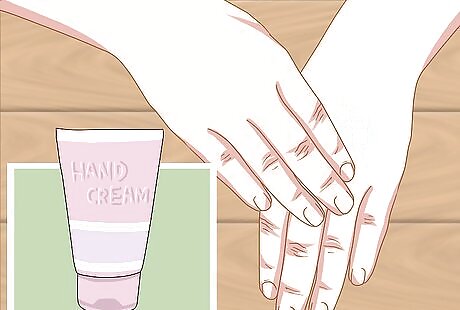
Massage hand cream into the hands. When your nails are properly filed and buffed, moisturize your hands, nails, and cuticles by applying a hydrating hand cream. Rub it into your hands in a circular motion until it’s completely absorbed. Massaging the hand cream into your skin also helps boost circulation to your fingers and hands.


















Comments
0 comment